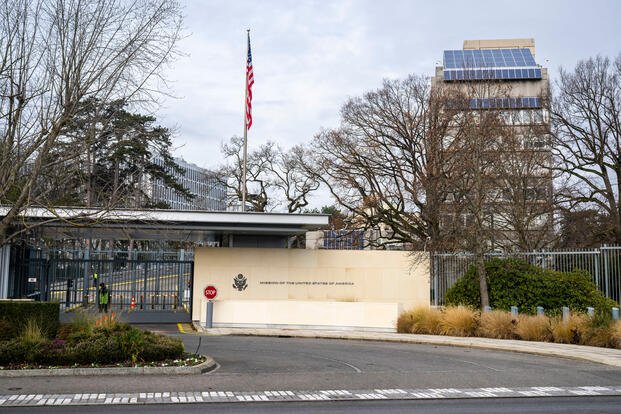
GENEVA (AP) — Talks between Ukraine and its Western allies on a U.S.-proposed peace plan to end Russia's invasion got underway in Geneva on Sunday, Ukrainian officials said Sunday.
The head of the Ukrainian delegation, presidential chief of staff Andrii Yermak, wrote on social media said that they held their first meeting with the national security advisers from the U.K., France and Germany. The allies have rallied around Kyiv in a push to revise the plan[1], which is seen as favoring Moscow.
U.S. Secretary of State Marco Rubio[2] was expected to join the talks together with Army Secretary Dan Driscoll and President Donald Trump’s special envoy Steve Witkoff.
“The next meeting is with the U.S. delegation. We are in a very constructive mood,” Yermak said. “We continue working together to achieve a lasting and just peace for Ukraine.”
Ukraine’s President Volodymyr Zelenskyy said he was waiting for the outcome of the talks. “A positive result is needed for all of us,” he said.
“Ukrainian and American teams, teams of our European partners —- are in close contact, and I very much hope there will be a result. Bloodshed must be stopped and it must be guaranteed that the war will not be reignited," he wrote in a post on Telegram on Sunday.
Ukraine and allies have ruled out territorial concessionsThe 28-point blueprint[3] drawn up by the U.S. to end the nearly four-year war has sparked alarm in Kyiv and European capitals. Zelenskyy has said his country could face a stark choice[4] between standing up for its sovereign rights and preserving the American support it needs.
The plan acquiesces to many Russian demands that Zelenskyy has categorically rejected on dozens of occasions, including giving up large pieces of territory. The Ukrainian leader has vowed that his people“will always defend” their home.
Speaking before Sunday’s talks, Alice Rufo, France’s minister delegate at the Defense Ministry, told broadcaster France Info that key points of discussion would include the plan’s restrictions on the Ukrainian army, which she described as “a limitation on its sovereignty.”
“Ukraine must be able to defend itself,” she said. “Russia wants war and waged war many times in fact over the past years.”
Speaking to reporters outside the White House on Saturday, Trump said the U.S. proposal was not his “final offer.”
“I would like to get to peace. It should have happened a long time ago. The Ukraine war with Russia should have never happened,” Trump said. “One way or the other, we have to get it ended.”
Trump didn’t explain what he meant by the plan not being his final offer and the White House didn’t respond to a request for clarification.
Rubio's reported comments cause confusionPolish Prime Minister Donald Tusk said Sunday that Warsaw was ready to work on the plan with the leaders of Europe, Canada and Japan, but also said that it “would be good to know for sure who is the author of the plan and where was it created."
Some U.S. lawmakers said Saturday that Rubio had described the plan as a Russian “wish list” rather than a Washington-led proposal.
The bipartisan group of senators told a news conference that they had spoken to Rubio about the peace plan after he reached out to some of them while on his way to Geneva. Independent Maine Sen. Angus King said Rubio told them the plan “was not the administration’s plan” but a “wish list of the Russians.”
A State Department spokesperson denied their account, calling it “blatantly false.”
Rubio himself then took the extraordinary step of suggesting online that the senators were mistaken, even though they said he was their source for the information. The secretary of state doubled down on the assertion that Washington was responsible for a proposal that had surprised many from the beginning for being so favorable to Moscow.
___
Associated Press writers Claudia Ciobanu in Warsaw, Poland and Sylvie Corbet in Paris contributed to this report.
___
Follow AP’s coverage of the war in Ukraine at https://apnews.com/hub/russia-ukraine[5]
© Copyright 2025 Associated Press. All rights reserved. This material may not be published, broadcast, rewritten or redistributed.

